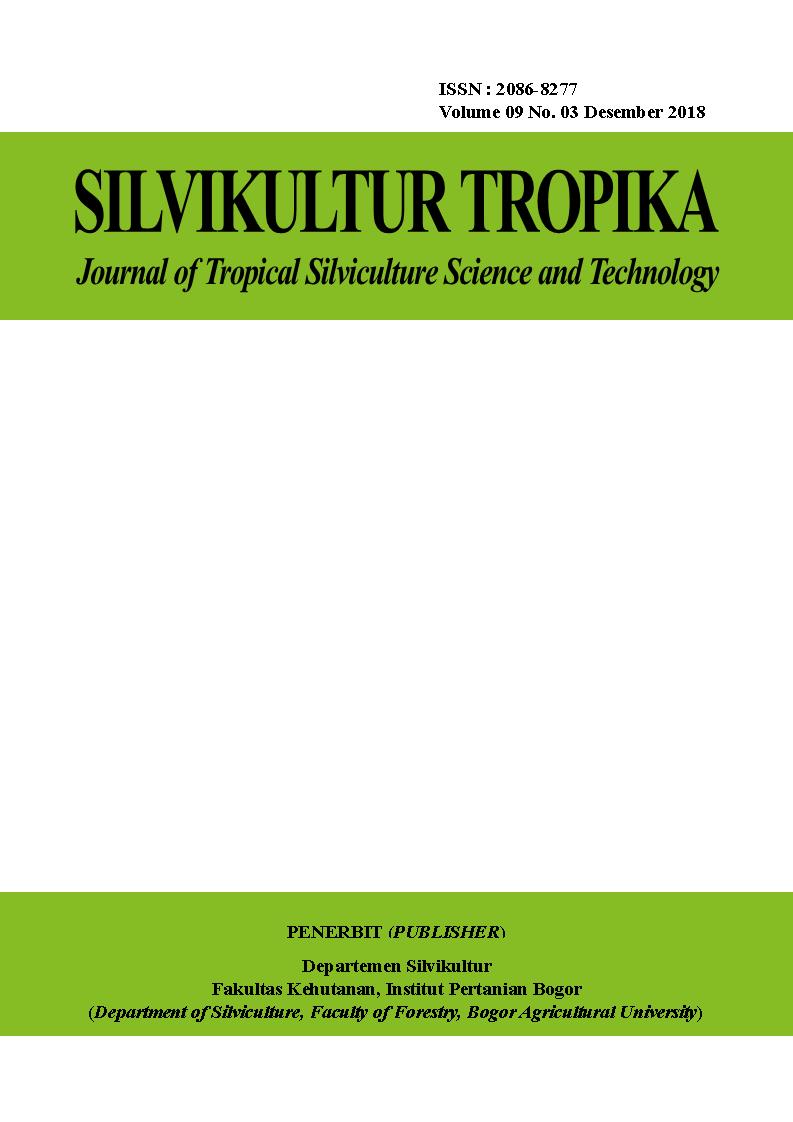Evaluasi Tegakan Mangrove Hasil Rehabilitasi dengan Teknik Guludan
Abstract
Guludan technique becomes an alternative for mangrove rehabilitation in the disused fishponds. This technique has been implemented since 2005 on the coast of Jakarta. The wider application of this technique requires several studies in advance to see growth of the mangrove in the already planted guludan. This study aims to measure the growth of mangroves planted by guludan techniques, identify environmental factors that affect their mangrove growth, and analyze their relationship. Measurements were performed on 40 guludan samples which planted by Rhizopora mucronata in 2010 - 2013. Rhizopora mucronata grew well in the guludans, followed by Sonneratia caseolaris that grew naturally. Both were dominated by individuals in sapling phase. Meanwhile, environmental factors affecting mangrove growth were N-total, P, Mg, Ca, Na, clay texture, CEC, soil salinity, soil pH, and water level in the guludan.
Keywords: guludan technique, mangrove rehabilitation, Rhizophora mucronata, Sonneratia caseolaris










